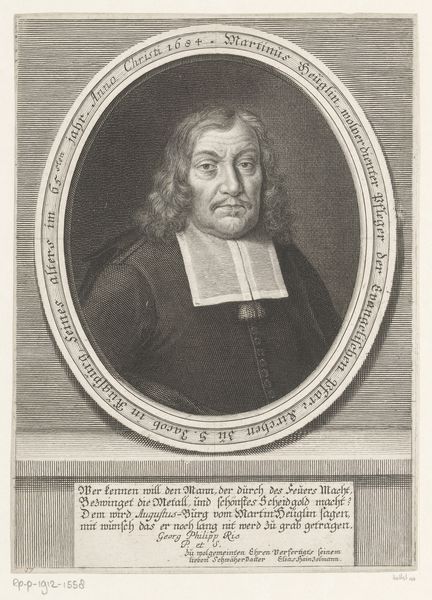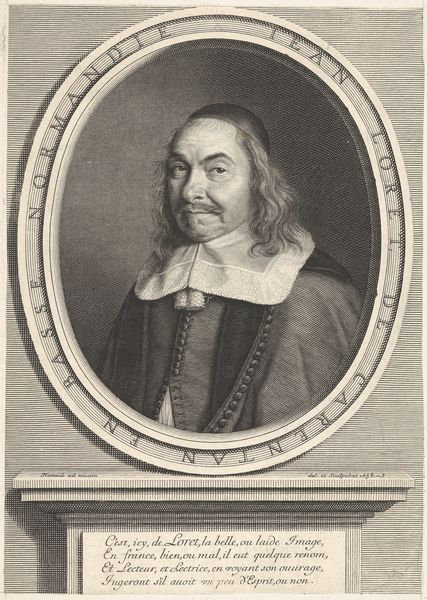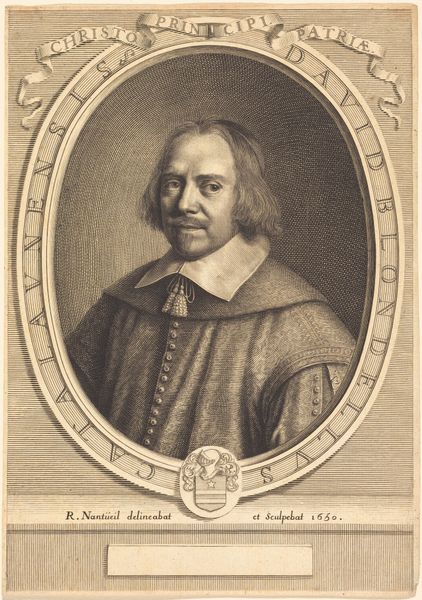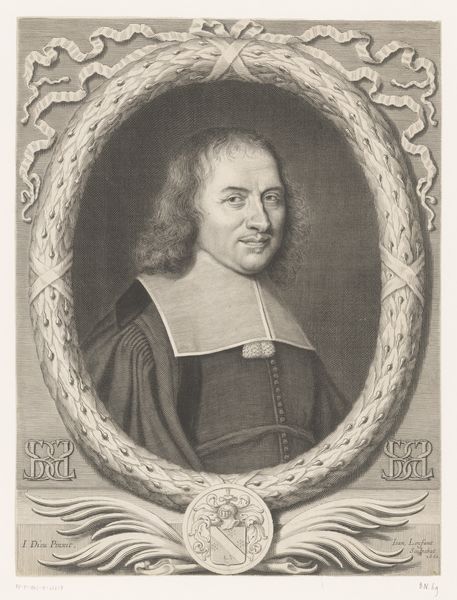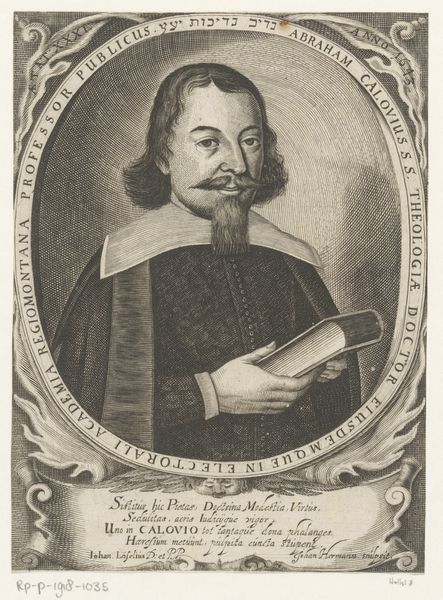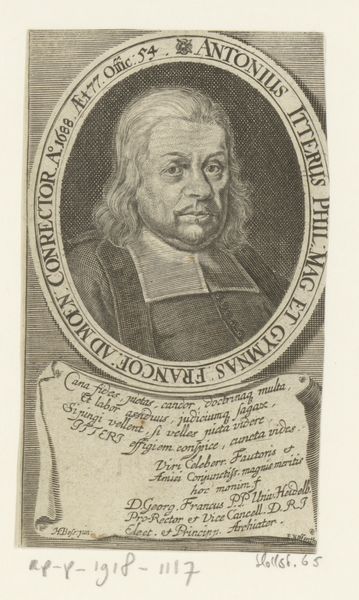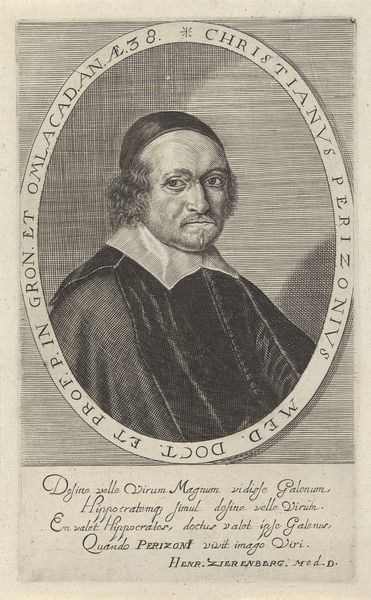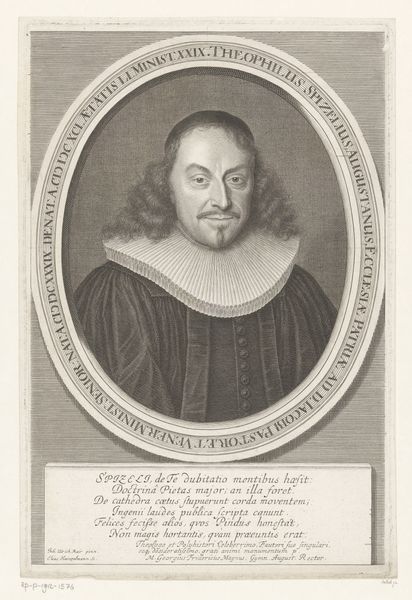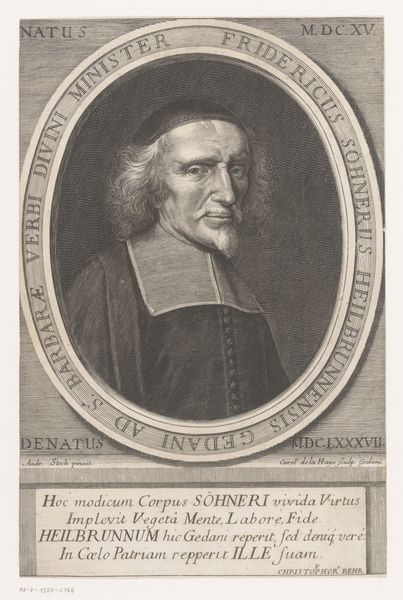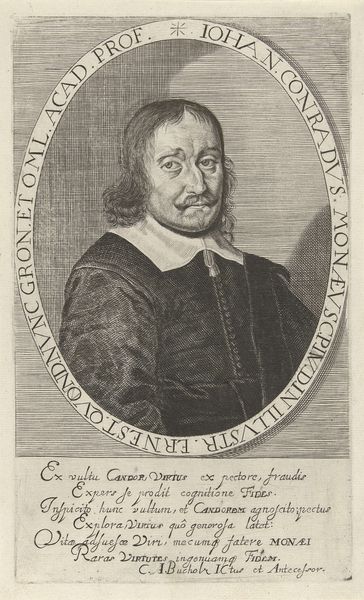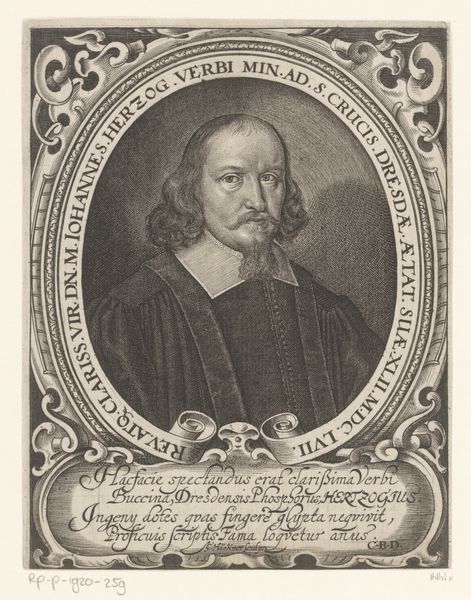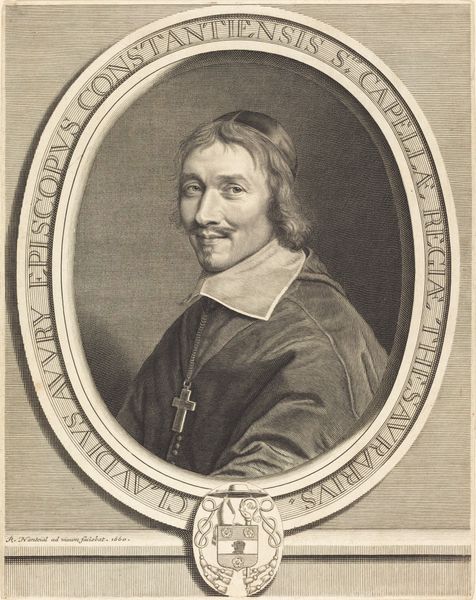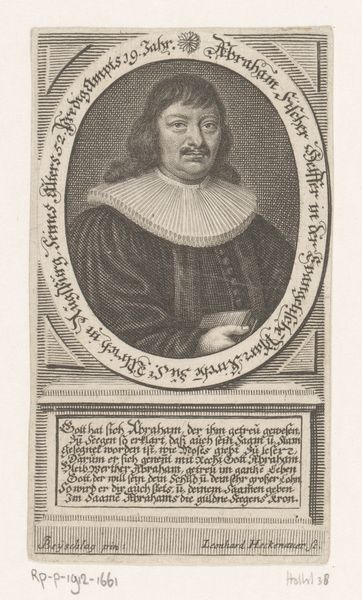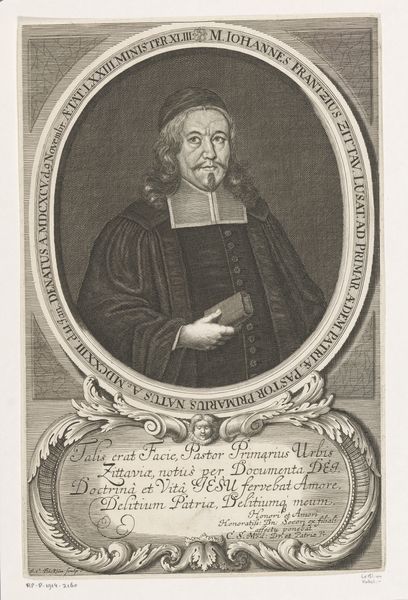
drawing, print, paper, ink, engraving
#
portrait
#
drawing
#
baroque
#
portrait image
# print
#
paper
#
historical photography
#
ink
#
engraving
#
poster
Dimensions: height 280 mm, width 187 mm
Copyright: Rijks Museum: Open Domain
Curator: Here we have a rather striking engraving, "Portret van Salomon Möller," likely created between 1687 and 1693. It's currently held in the collection of the Rijksmuseum. Editor: My first impression is one of serious contemplation, but there's a hint of warmth too. The circular frame gives it a sense of focused attention. What draws me in are those intelligent, somewhat melancholic eyes. Curator: It's compelling, isn't it? The visual language here aligns with that of Baroque portraiture. It reflects Möller's role, situating him within the political and intellectual contexts of his time. He was, after all, a pastor and scholar. His clothing and the Latin inscription denote status. Editor: Precisely! The inscription, the dark robe, and the crisp white collar all signal Möller's place in the world, but so much more can be gleaned from it! The textures, achieved through engraving— the dense cross-hatching to create shadow, it all builds to the weight this man must have carried, his dedication. I keep wondering what particular belief he dedicated his life to in this era of upheaval. Curator: I'd agree, the technique mirrors his inner character as presented. One thing I can’t get away from are the constraints he must have been under as a man of God during that historical time. Was he conflicted with certain societal expectations? What sort of societal change did he champion through the church or maybe get suppressed by? It all seems worth researching to understand him better. Editor: It is absolutely worth considering the weight and complexity in the portrait’s symbolism, beyond a simple surface-level assessment of it being Baroque. The image seems meant to convey both a general sense of piety and a more individual impression of the man. The text accompanying it, though classical in its tone, attempts to humanize Möller and signal towards the complexity of his legacy in a way we can't simply assume without further investigation. It’s worth interrogating, wouldn’t you say? Curator: Absolutely. By deconstructing such iconic visuals and texts within artworks like this, we start to see a much richer, and often much more contradictory, picture of that historical moment in time. It invites us to think about our values. Editor: Indeed, looking at his representation is ultimately to question the narrative we've inherited.
Comments
No comments
Be the first to comment and join the conversation on the ultimate creative platform.
